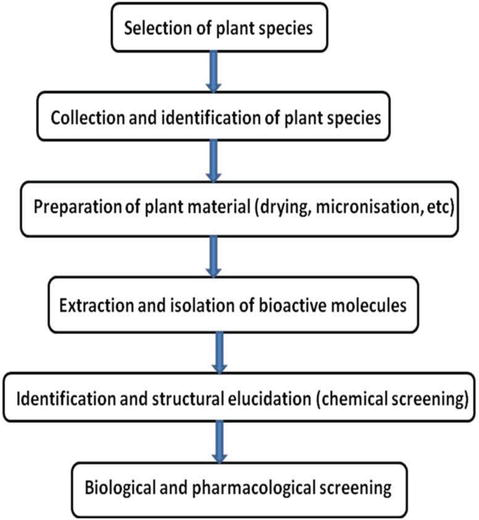
Bioactive component extraction method for active ingredients
Bioactive components are compounds extracted from plants that have pharmacological effects on human health. In a way the extracts are nothing but nutraceuticals or elements from a natural plant source which is extracted with the purpose of making a cure for an existing disease or as a preventive measure. For example, grape used for wine making has by products like pomace, stems and leaves. The grape pomace has polyphenols and other small phenolic compounds exhibiting high health beneficial properties, such as cardio-protective, neuro-protective, anti-inflammatory, anti-carcinogenic, and antimicrobial activities. Other examples of fruit by products are apple pomace, citrus peels, seeds and pulp and waste from carrot, potato and tomato. They are extracted by both conventional and modern techniques. The examples of bioactive compounds are carotenoids, flavonoids, carnitine, choline, coenzyme Q, dithiolthiones, phytosterols, phytoestrogens, glucosinolates, polyphenols, and taurine.
The basic flow chart the extraction process is given below:

The main conventional extraction techniques in relation to bioactive compounds are
Soxhlet: As the name suggests, using the Soxhlet apparatus that uses a solvent that passes through a small amount of the sample. This process is both time taking and consumes a lot of solvent.
Maceration: A small amount of sample is ground to a fine powder and mixed with the solvent and continuously stirred. The extract is made more efficient by diffusion and the fact that the surface of the sample is increased with maceration or grinding, thus making it easier to mix with the solvent.
Hydrodistillation: Hydrodistillation undergoes three physicochemical processes namely hydrodiffusion, hydrolysis, and decomposition by heat. This process takes 6 to 8 hrs to complete and does not involve the use of organic solvents. Distilled water is used to perform the process and is used to extract the volatile fraction in foods. Use of high temperature during extraction can often lead to degradation of these compounds. This is one of the limitations of this technique. Hydrodistillation is a very complete process. Both volatile organic compounds and non-volatile organic compounds can be extracted and physically separated in one step. Azeotropic distillation is used to separate the volatile organic compounds from the matrix. They are then condensed, collected, and separated in a Florentine flask. The soluble non-volatile organic compounds are extracted in the boiling water. There is of course high levels of energy consumption and is time consuming.
There is always a risk involved about the toxicity of the solvents used to extract the bioactive compounds and the chances of presence of the same in the extracts along with low yield when the conventional methods are used. In such a case, the modern method comes handy. It works towards preserving nature. However, there are some challenges in the development and formulation of functional foods with its active ingredients.
Modern techniques or green techniques are also known as cold extraction techniques. It promotes the idea of reducing the waiting time and use of resources in order to get the desired results with maximum efficiency. The benefits of the green technologies over the conventional methods are as follows:
- faster extraction rate
- more effective energy use
- increased mass and heat transfer
- reduced equipment size
- and reduction in the number of processing steps.
Green techniques include
- Microwave Assisted Extraction (MAE): MAE is based on the principle of dielectric heating. that is the process in which a microwave electromagnetic radiation heats a dielectric material by molecular dipole rotation of the polar components present in the matrix.
- Ultrasound Assisted Extraction (UAE): Ultrasound with the frequency of 20kHz to 100MHz is passed through the sample resulting in compression and expansion cycles creating a cavities. These cavities collide with each other resulting in inter-particle collision, inter-particle diffusion and enhanced diffusion of the extractable compounds into the solvent.
- Supercritical Fluid Extraction (SFE): This process uses supercritical CO2. It allows selective extraction of phenolic compounds that are soluble in supercritical CO2. In comparison to the conventional techniques there are the advantages of easy recovery, selectivity, compounds stability, time, and an overall total energy saving. The physico-chemical parameters of sCO2. are temperature, pressure, and amount of co-solvent and the biomass nature and processing before extraction (lyophilization, micronization, etc.) deeply affect the final extraction yields and composition
- Deep Eutectic Solvent (DES) Extraction: The phenolic compounds from agri-food wastes are extracted using DES. DES preparation is done by mixing, at a suitable temperature, a hydrogen bond acceptor (HBA) and a hydrogen bond donor (HBD). Compared to common organic solvents, DES offer many advantages such as low price, easy preparation, and easy availability. Moreover, most of them are biodegradable with very low toxicity.
There are many new food product development consultants that offers you with food consulting services, as they provide an easy method to accomplish any need you might have.
References:
- Green technologies for the extraction of bioactive compounds in fruits and vegetables; Marcela Bromberger Soquetta; Pages 400-412; CytTA-Journal of Food; Volume 16,2018, Issue 1
- Bioactive Phenolic Compounds From Agri-Food Wastes: An Update on Green and Sustainable Extraction Methodologies; Front. Nutr., 07 May 2020; Lucia Panzella, Federica Moccia
- Effect of extraction temperature and solvent type on the bioactive potential of Ocimum gratissimum L. extracts; Confidence Onyebuchi, Doğa Kavaz; 2020; Scientific Reports
- Preparation of medicinal plants: Basic extraction and fractionation procedures for experimental purposes; 2020, Volume : 12, Issue : 1, 1-10; Journal of Pharmacy and BioAllied Sciences
- Novel process to extract nutraceutical concentrates; 2020; M Mukhopadhyay and H Karamta; IIT Bombay, Industrial Research and Consultancy Centre
- Analytical Methods of Isolation and Identification; 2019; Weisheng Feng, Meng Li, Zhiyou Hao and Jingke Zhang
- High pressure extraction and its application in the extraction of bio‐active compounds: A review; Shafat A. Khan; Rouf Aslam; Hilal A. Makroo





